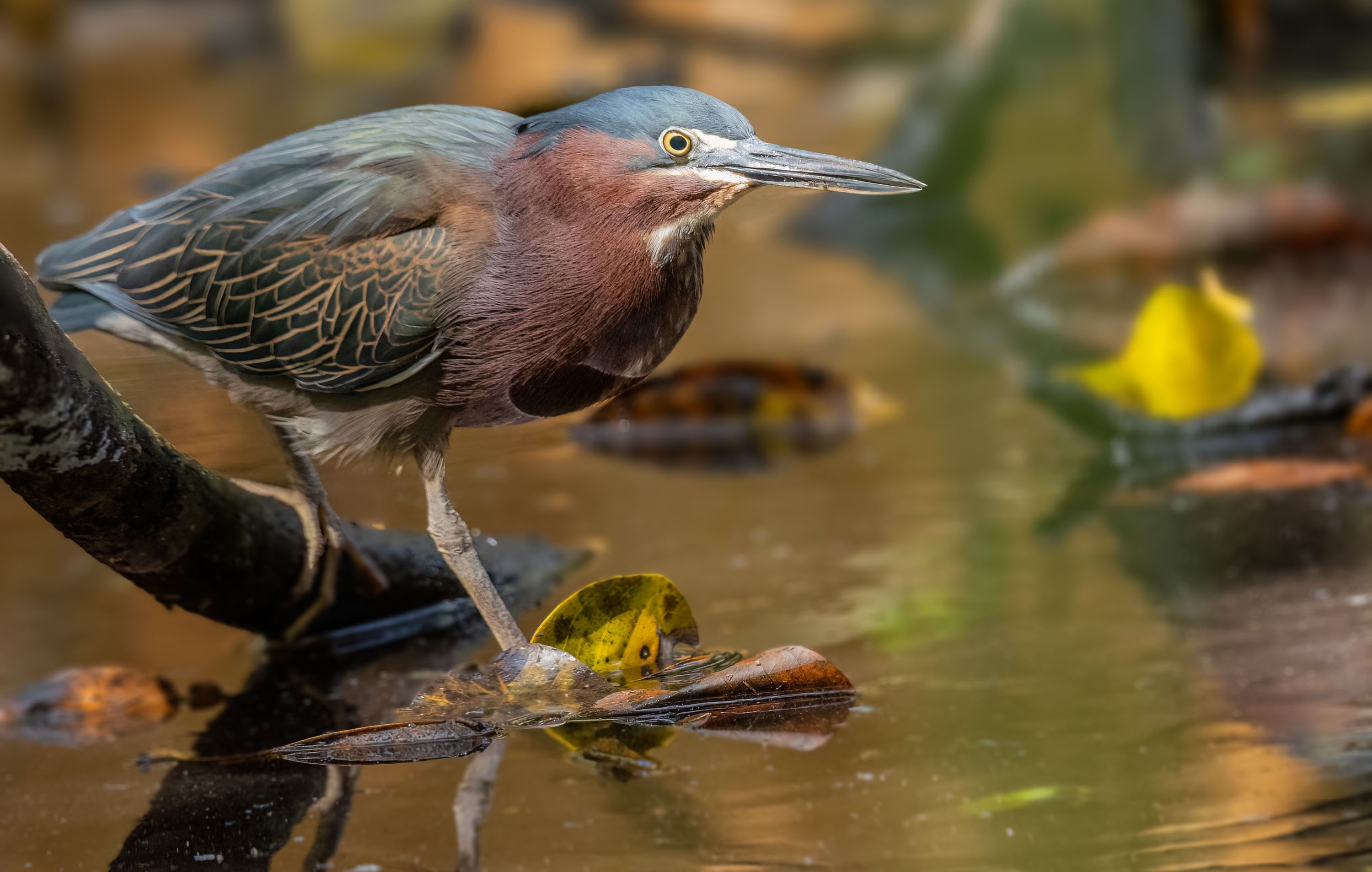
Butorides: The Genus of Compact and Versatile Herons
Introduction to the Genus Butorides
The genus Butorides, part of the heron family Ardeidae, encompasses a group of small herons known for their adaptability and versatility. These birds are notable for their compact size, striking plumage, and remarkable hunting skills.
Physical Characteristics
Birds within the Butorides genus are smaller than many other herons, typically measuring between 35 to 50 cm in length. They exhibit a variety of colorations, from slate gray to richly striated patterns, and possess short, strong bills and legs, which aid in their agile hunting.
Species within the Genus
Butorides includes several species, such as the well-known Striated Heron (Butorides striata) and the Green Heron (Butorides virescens). Additionally, the genus features the Lava Heron (Butorides sundevalli), unique to the Galápagos Islands.
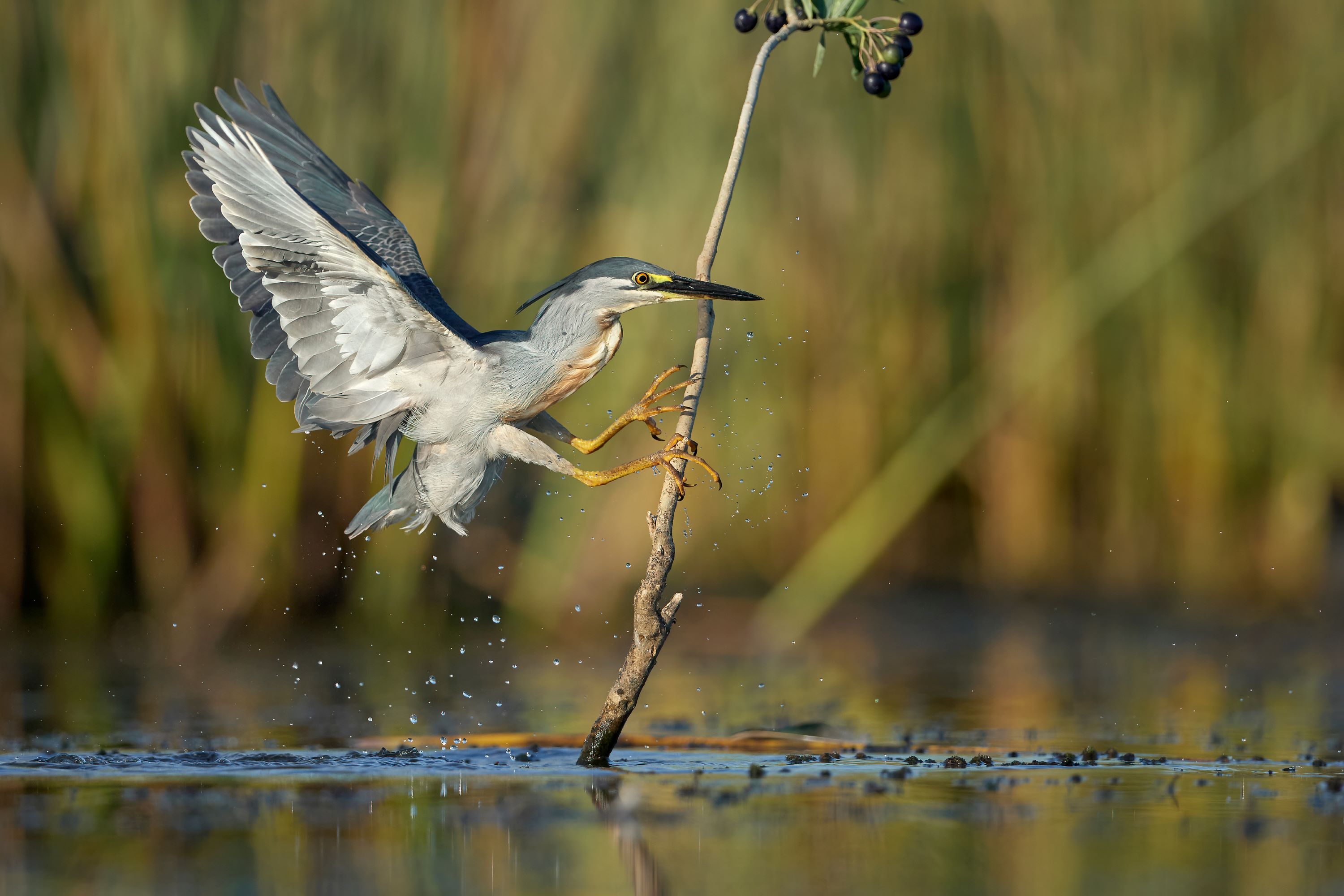
Habitat and Distribution
Butorides herons are found in a wide range of habitats, including freshwater wetlands, rivers, mangroves, and estuaries. They have a global presence, with species native to regions including the Americas, Africa, Asia, and the Galápagos Islands.
Behavior and Lifestyle
These herons are known for their solitary nature and are often observed foraging alone. They display remarkable hunting techniques, including bait fishing, where they use tools to attract prey. This behavior demonstrates a high level of intelligence and adaptability.
Feeding Habits
The diet of Butorides herons mainly consists of small fish, amphibians, and invertebrates. They are skilled hunters, often seen patiently waiting or slowly stalking their prey before making a swift catch.
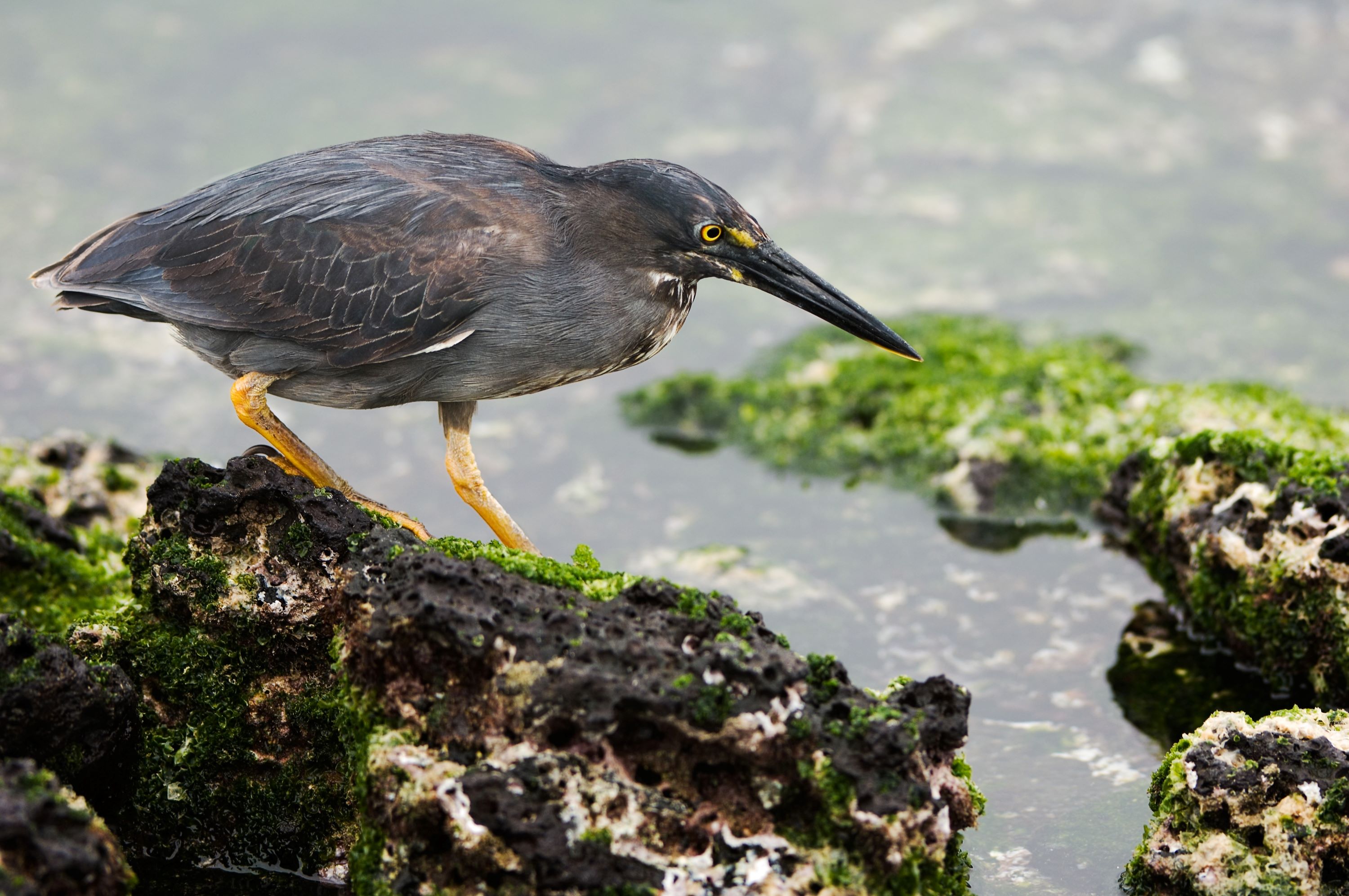
Breeding and Nesting Habits
Butorides herons typically breed in small colonies or solitarily. They build their nests in trees, shrubs, or mangroves, using twigs and vegetation. The nests are often situated near water, providing easy access to food sources.
Egg Laying and Incubation
Females usually lay 2 to 5 eggs, which are pale blue or green. Both parents share incubation duties, and the eggs hatch after about 20 to 25 days.
Chick Rearing and Parental Care
The chicks are altricial and dependent on their parents for food and protection. Both parents are involved in feeding the chicks, which fledge the nest within several weeks of hatching.
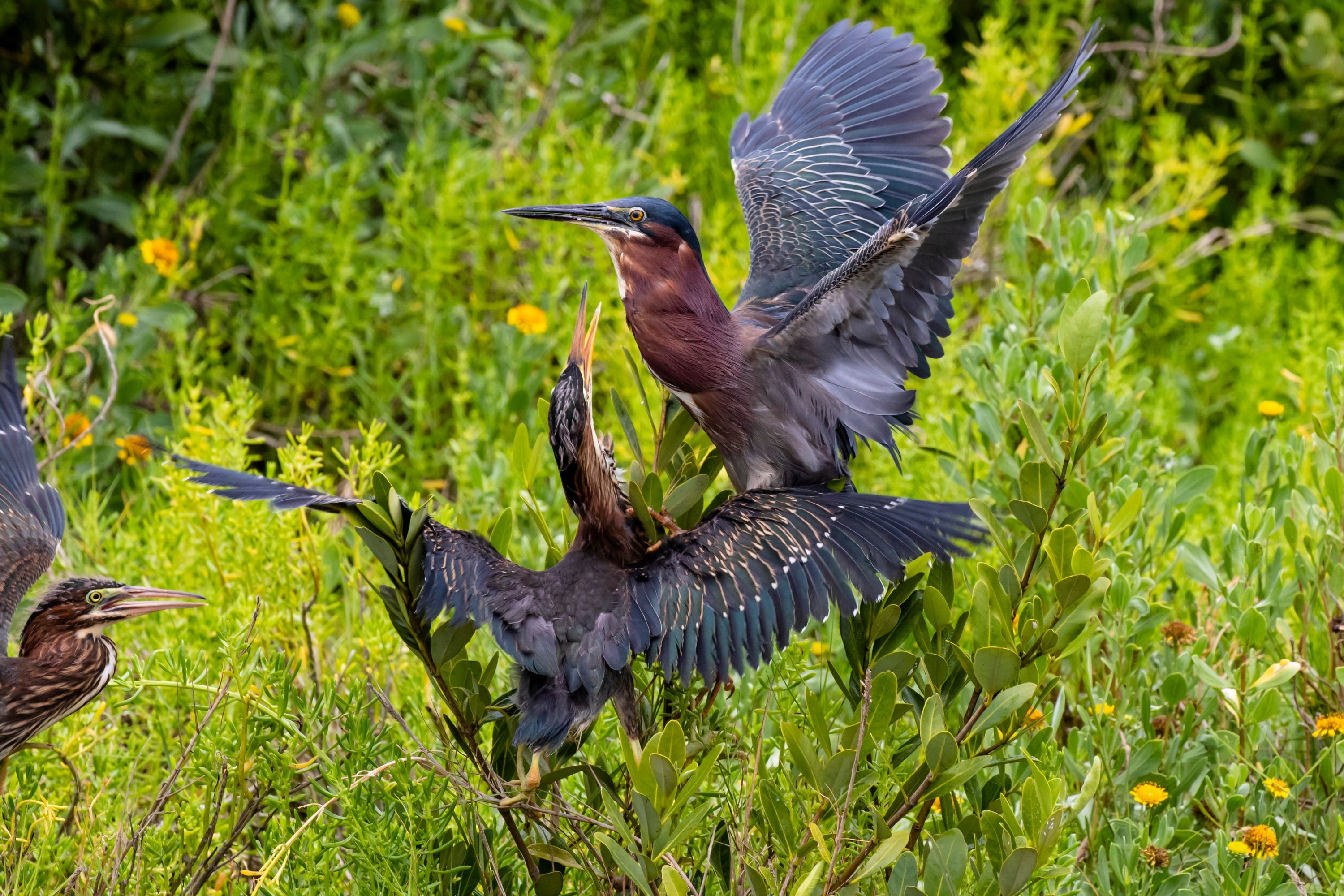
Vocalizations and Communication
Butorides herons are relatively quiet but can produce a variety of vocalizations, particularly during the breeding season. These include soft calls and harsher alarm sounds, used for communication and territorial defense.
Conservation Status
While some species in the Butorides genus are widespread and not currently threatened, others, like the Lava Heron, have a limited range and face conservation challenges. Habitat preservation is crucial for maintaining healthy populations of these herons.
Similar Species and Taxonomy
Belonging to the order Pelecaniformes, Butorides herons are closely related to other small heron species but are distinguished by their unique hunting behaviors and habitat preferences. They share some characteristics with larger herons but are known for their more secretive and solitary nature.
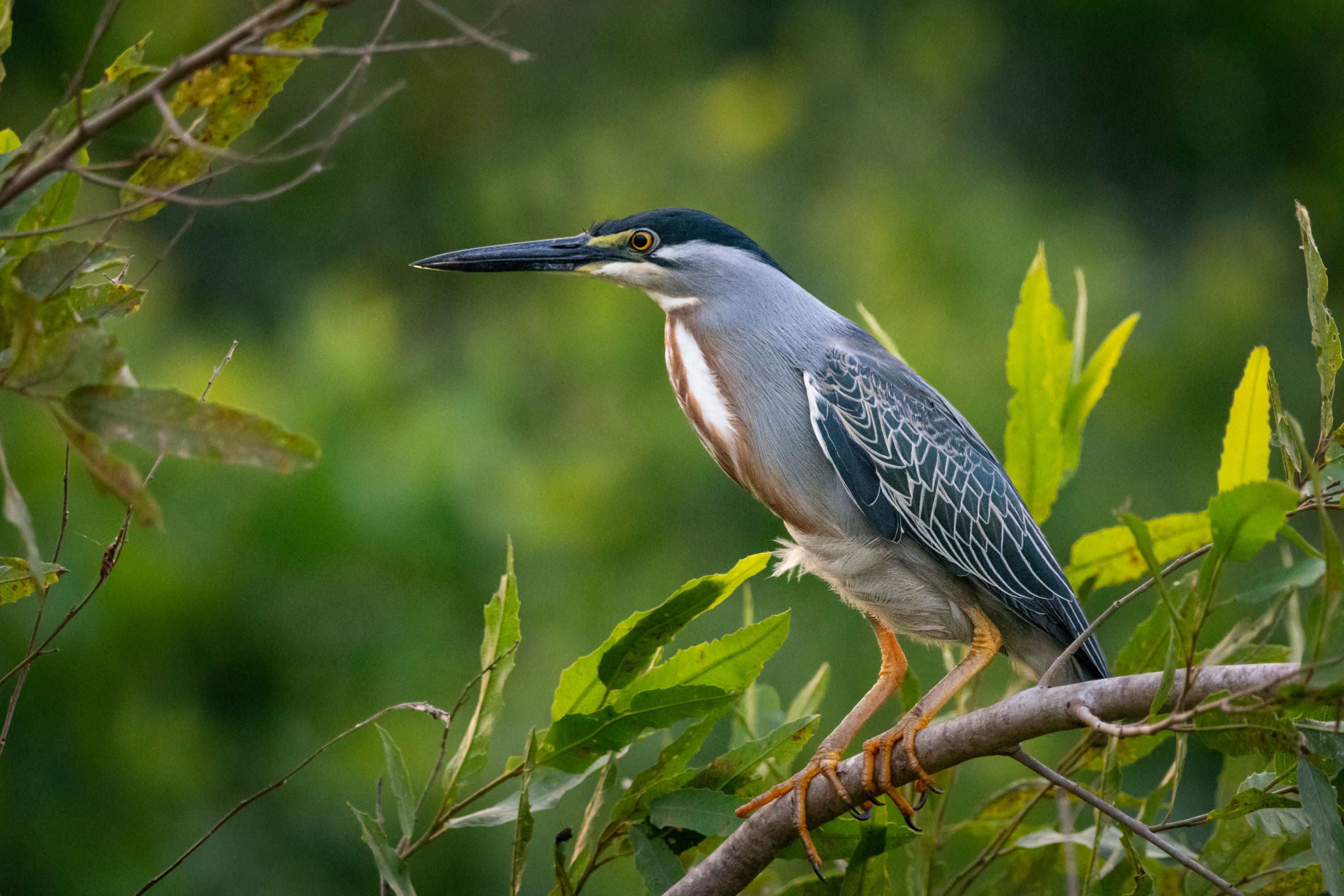
Butorides in Utah
In Utah, the Green Heron (Butorides virescens) can be found, especially in wetland areas and along rivers. They are often spotted perched silently near water, waiting for prey.
Conclusion
The genus Butorides represents a fascinating and diverse group within the heron family. Their unique behaviors, such as bait fishing, and their adaptability to various habitats, from tropical mangroves to temperate wetlands, highlight the complexity and versatility of these small herons. Observing Butorides herons in their natural environments offers a window into the rich and diverse world of avian life, underscoring the importance of preserving their natural habitats for future generations.
Species in the Genus Butorides:
- The Green Heron - Butorides virescens
- The Lava Heron - Butorides sundevalli
- The striated Heron - Butorides striata